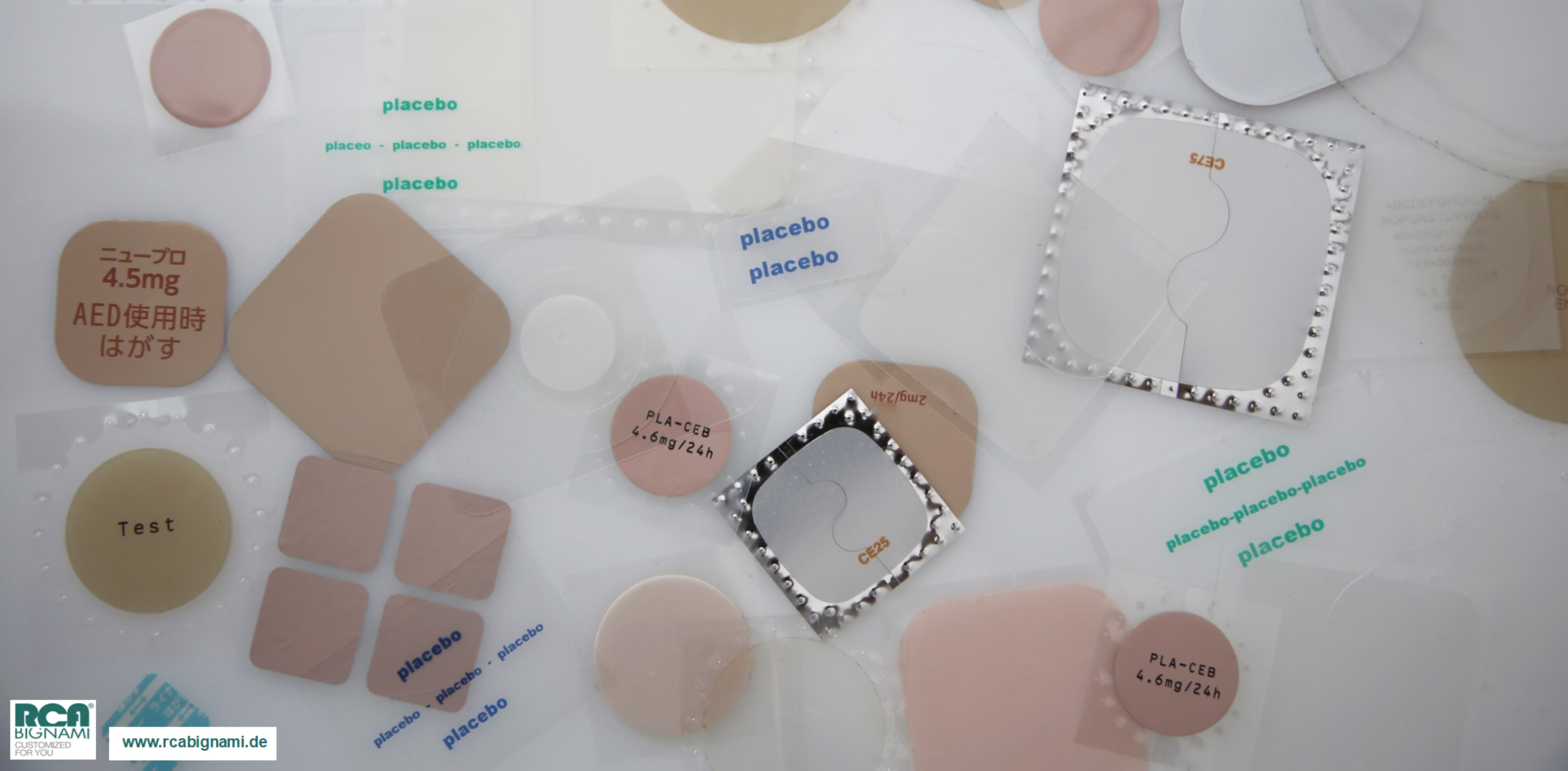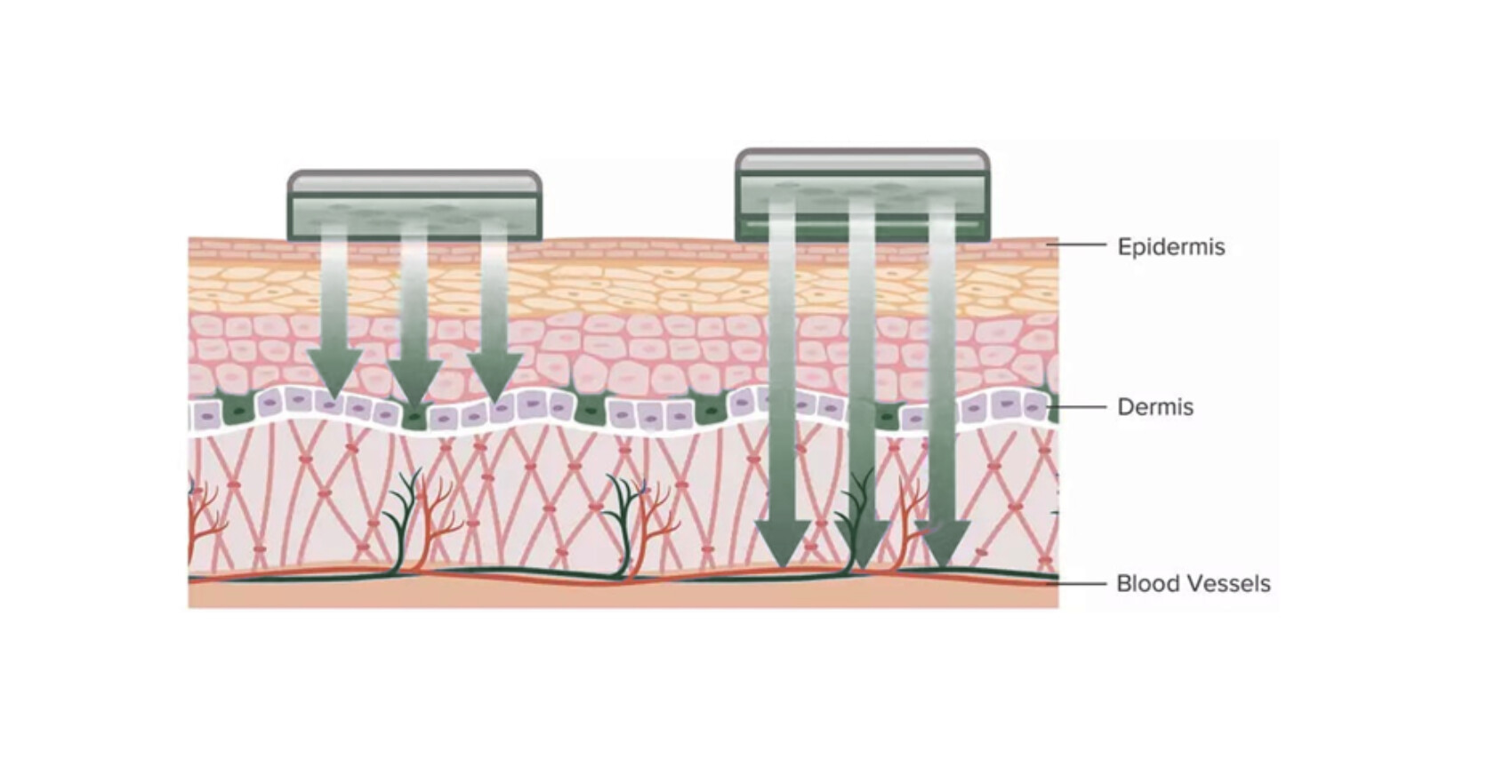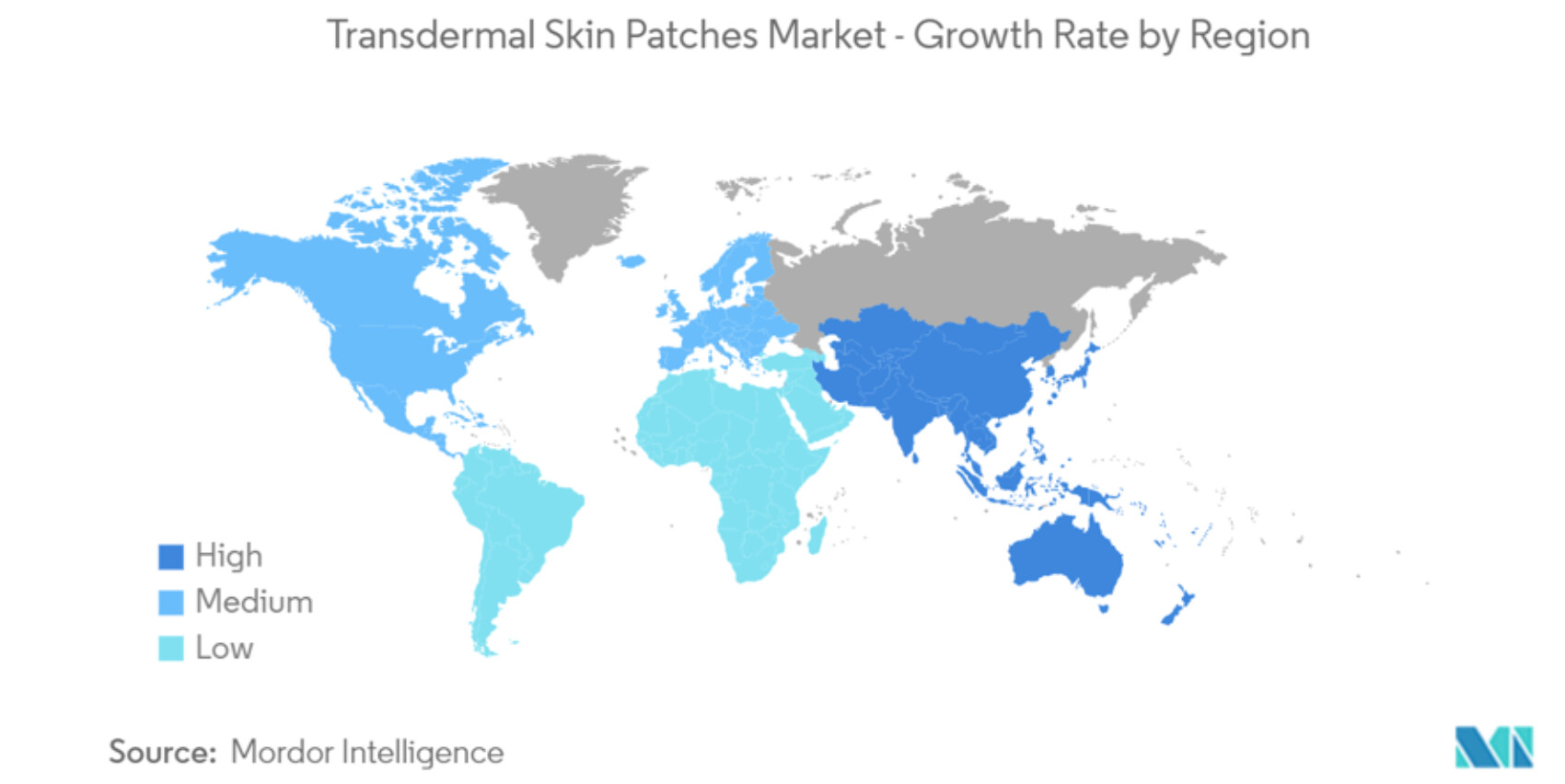
Transdermal Patches
Transdermal Drug Delivery Systems
Transdermal Drug Delivery Systems (TDDS/TDS) or Transdermal Therapeutic Systems (TTS) are medicated adhesive patches that are applied on the skin to discreetly and effectively deliver a specific dose of medication through the skin and thus enter the bloodstream.
Due to their ease of administration, excellent patient convenience and adherence, TDS/TTS offer an advantageous alternative to other types of oral drug delivery systems like tablets or syrups. Transdermal patches are not only used in pharmaceutical industry but also in the skin care industry, including cosmetics.
Different Types of Transdermal Patches
We find today different types of transdermal patches starting from Reservoir Patches with gel-containing reservoirs and classic 1-day Matrix patches with or without dimples, up to 7-day Overtape patches or Topical Patches for dedicated applications treating a wide range of conditions and diseases, such as Alzheimer, Parkinson, depressive disorder, pain relief, and various other conditions.
Transdermal Drug Delivery
The drug released from TDS initially permeates the skin through the stratum corneum progressing through the epidermis and dermis without accumulating the active ingredient in the dermal layer. Once the drug reaches the dermal layer, it is released for systemic absorption via the dermal microcirculation.
The big advantage of the Transdermal Drug Delivery in comparison to other types of medication delivery (such as oral, topical, intravenous, or intramuscular) is that the patch provides a controlled release of the medication into the patient, through for example a porous membrane covering a reservoir of medication or through thin layers of medication embedded in the adhesive.
The main disadvantage of Transdermal Delivery Systems is the fact that the skin is a very effective barrier; as a result, only medications whose molecules are small enough to penetrate the skin can be delivered by this method.

Consistent and controlled drug delivery through patches offers a precise and reliable method of administering medication, effectively reducing the risk of under or overdosing. The steady release of the API over a specified period ensures that the patients receive the correct dosage at the right intervals, thus helping to avoid potential adverse reactions or treatment failures.
History of Transdermal Patches
The first commercially available prescription patch was a 3-day scopolamine patch against motion sickness developed for space travel and was approved by the U.S. Food and Drug Administration in December 1979.
Only some years later the first Reservoir patch for the treatment of Angina Pectoris was launched.
Further wellknown patch is the Nicotine patch playing today a key role in helping people stop smoking and gradually reducing thier dependence on Nicotine or patches for pain relief like the Fentanyl patches or Hormone patches for hormone therapy during menopause.

Market of Transdermal Patches
Transdermal patches offer a non-invasive, painless method of drug delivery with the added benefit of delivering a continuous therapeutic dose over a period of time. These benefits are considered as driving factors for market growth and improved acceptance.
Today, the global market for transdermal patches is estimated to be about approx. 9 billion US$ and it is supposed to be still growing the next years with an yearly increase of approx. 4.9 % with an average estimate of one transdermal product receiving FDA approval every second year.
The factors responsible for the segment growth are the increasing prevalence of pain-related diseases such as diabetic neuropathy, rheumatoid arthritis, osteoarthritis, migraine and other diseases in the population.



